12 Japanese Novels: Travel With Your Imagination From Hokkaido to Okinawa

Get ready for your trip to Japan by reading a novel set in the region you plan to visit! From Hokkaido and Tokyo, to Kyoto and Okinawa, we introduce places featured in twelve famous Japanese novels available in English.
Explore Japan through Japanese Novels Available in English
If you're already dreaming of your next trip to Japan, how about reading a story set in a place you plan to visit? We introduce twelve excellent Japanese novels that offer glimpses into the lives of people who live in or travel to Tokyo, Kyoto, Hokkaido, Nagasaki, Okinawa, and other regions of Japan.
Explore Japan with your imagination first for a significantly deeper travel experience.
12 Japanese Novels Available in English
1. Hokkaido: 'A Wild Sheep Chase' by Haruki Murakami
2. Iwate: 'Night on the Galactic Railroad' by Kenji Miyazawa
3. Tokyo: 'Coin Locker Babies' by Ryu Murakami
4. Tokyo: 'Moshi Moshi' by Banana Yoshimoto
5. Tokyo: 'Breasts and Eggs' by Mieko Kawakami
6. Kyoto: 'The Old Capital' by Yasunari Kawabata
7. Kyoto: 'The Temple of the Golden Pavilion' by Yukio Mishima
8. Wakayama: 'The River Ki' by Sawako Ariyoshi
9. Ehime: 'The Silent Cry' by Oe Kenzaburo
10. Ehime: 'Botchan' by Soseki Natsume
11. Nagasaki: 'Silence' by Endo Shusaku
12. Okinawa: 'In The Woods of Memory' by Shun Medoruma
1. Hokkaido: 'A Wild Sheep Chase' by Haruki Murakami

'A Wild Sheep Chase' by Haruki Murakami, transl. by Alfred Birnbaum
First published in 1982 in Japan and in 1989 in English translation, 'A Wild Sheep Chase' is one of Haruki Murakami's early works and arguably the one that established him as an author known worldwide.
The story in 'A Wild Sheep Chase' unfolds in Tokyo, Hokkaido, and the hometown of the main character, 'I,' the latter of which is thought to be Kobe.
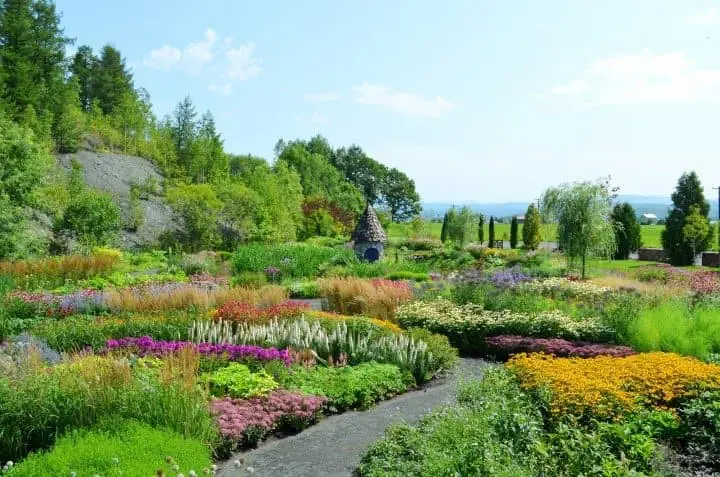
Picture from Asahikawa In Hokkaido - 10 Wonderful Places To Explore
At the request of a powerful underground organization, the main character and his girlfriend embark on a trip to find a wondrous sheep with a star-shaped mark on its back. The very few clues they have, partly provided by the main character's friend, the Rat, take them to Hokkaido. After spending a few days in Sapporo at a hotel that seems featureless but proves to be surrounded in mystery, the two travel to a town called Junitaki, a fictional town located north of Asahikawa.
The majestic nature of Hokkaido, with its vast fields, mountainous regions, and winters that set in as early as October, is featured in detail in the second half of the novel. The main character discovers glimpses of Hokkaido's Meiji-period history when groups of Japanese started to come in and built communities in this region borrowing the knowledge of the Ainu people.
'A Wild Sheep Chase' is an engaging read that will inspire you to travel to Hokkaido and enjoy your own adventure there. Murakami has been criticized for his 'pop literature,' a kind of writing that seems disengaged with the social and political realities of Japan. But a close read of 'A Wild Sheep Chase' may convince you that not taking a position in the inner conflicts of Japanese society is in itself a taking of position.
Read also
↑ Return to the top of article.
2. Iwate: 'Night on the Galactic Railroad' by Kenji Miyazawa
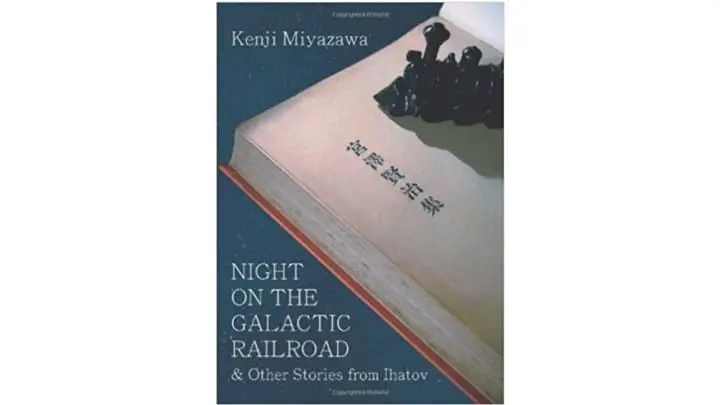
'Night on the Galactic Railroad and Other Stories from Ihatov' by Kenji Miyazawa, transl. by Julianne Neville.
Many of our readers will think 'Hold on a minute! 'Night on the Galactic Railroad' is not set in Iwate but in a completely fictional world!'
While this is true, Kenji Miyazawa was born in Iwate and the village or town where 'Night on the Galactic Railroad' is set is heavily inspired by the author's home region.
Take, for example, the Centaur Festival to which Giovanni, the main character, rushes after returning home after school and work. The Centaur Festival is fictional, but its atmosphere evokes images of the Tanabata Star Festival, as well as of Tohoku Region's summer festivals that involve large parades of gorgeous paper lanterns. Tohoku region, of which Iwate is a part of, is famous for its Star Festival traditions, which give this festival a depth of significance that is less visible in other regions of Japan.

Picture by FUKA KAMATA. From A Sight To Behold! 4 Dreamworld Winter Railroads In Tohoku
On the night of the Centaur Festival, Giovanni embarks on a fantastical trip along the Milky Way together with his friend, Campanella. The story unfolds in the night sky, among the constellations, featuring other passengers on the Galactic Railroad. They all come and go but leave lasting impressions on Giovanni and his friend. The story itself is a heartfelt meditation on life and death, and an exploration of what true happiness is.
If you travel to Iwate, you can actually ride the SL Ginga, a steam locomotive train modeled after the train in Miyazawa's novel. Watch the train at night from below as it runs over Megane Bridge and it will look as if it's traveling through the stars. The nature-rich surroundings are ideal for stargazing and you can have fun finding many of the constellations and stars mentioned in the story.
Read also
3. Tokyo: 'Coin Locker Babies' by Ryu Murakami

'Coin Locker Babies' by Ryu Murakami, transl. by Stephen Snyder.
As you might expect, Tokyo is the setting of many Japanese novels. The manifold and often contradicting images of Tokyo in fiction offer insights into how complex and how many-sided this city really is. The fact that it's like a living creature with a will and destiny of itself may account for Tokyo's irresistible power to attract people.
If you're looking for the fascinating contrast between skyscraper heights and sophistication on one side, and darkness, danger, and cruelty on the other side, then look no further than 'Coin Locker Babies' by Ryu Murakami.
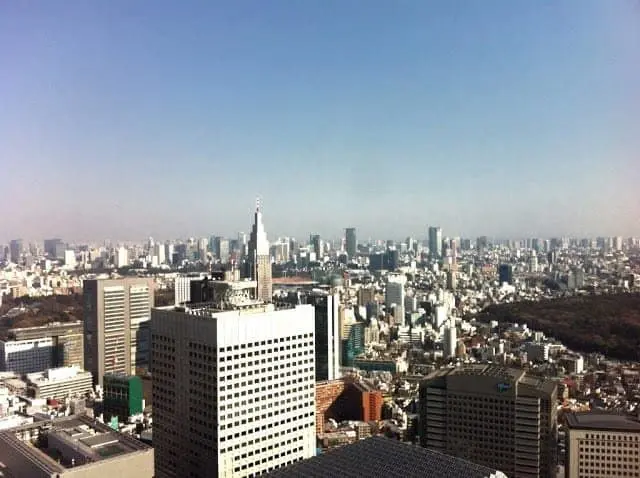
Picture from Tokyo Metropolitan Government Observatory: Enjoy The City View For Free!
The story follows the growth of two children, Kiku and Hashi, who had been abandoned as babies in coin lockers at the train station. After a troubled childhood, which they go through by standing together, their ways part but they are forever haunted by the image of their mothers. They discover in themselves an overwhelming instinct to live--probably the most precious gift they received from their mothers.
This novel offers one of the most powerful depictions of Tokyo in Japanese literature. Tokyo is definitely not only the setting for this story. It grows into an almighty opponent that occasionally borrows a mother's face.
4. Tokyo: 'Moshi Moshi' by Banana Yoshimoto
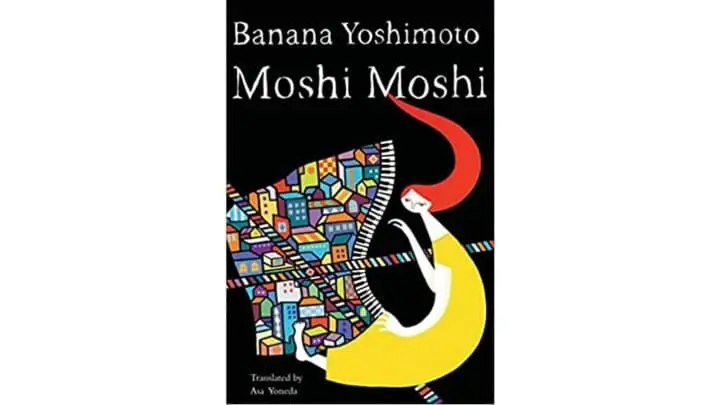
'Moshi Moshi' by Banana Yoshimoto, transl. by Asa Yoneda.
In 'Moshi Moshi,' you'll encounter the healing side of Tokyo. The main setting is Shimokitazawa, a youthful town full of cozy bars, small theaters, and beautiful cafes. The main character, Yoshie, moves to this town after losing her father, a musician who inexplicably committed suicide. She starts a new life in Shimokitazawa, living in a small apartment, and working as a waitress in a restaurant. Her mother comes to live with her as she also needs to overcome the tragedy of losing her husband.

Picture from Shimokitazawa Complete Guide - Top 15 Spots In Tokyo's Trendy Subculture Haven
The story depicts each step of their new life and recovery in Shimokitazawa, surrounded by locals who are open and warmhearted. The beginning of their new life coincides with investigating and eventually finding out the circumstances of the death of Yoshie's father.
A recurrent theme in Banana Yoshimoto's novels is healing after a big loss, usually involving the death of someone dear. In 'Moshi Moshi,' the city plays an important part in this healing process. Take a walk around the streets of Shimokitazawa and you might just feel for yourself the natural livelihood of this town, a livelihood that is is so bright and powerful that it is contagious.
5. Tokyo: 'Breasts and Eggs' by Mieko Kawakami
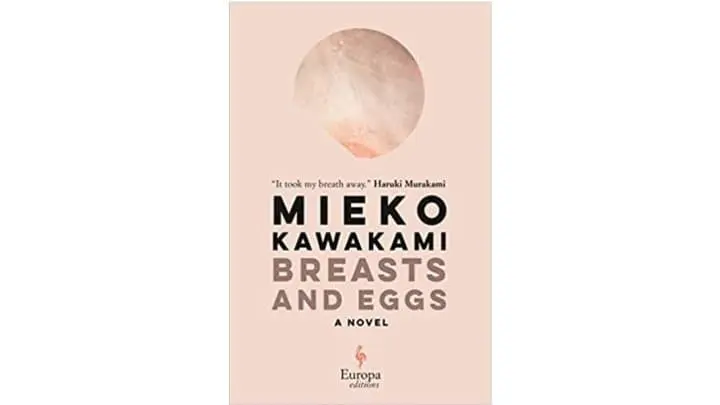
'Breasts and Eggs' by Mieko Kawakami, transl. by Sam Bett and David Boyd.
'Breasts and Eggs' appeared in English recently, in April 2020. It tells the story of mother and daughter, Makiko and Midoriko, who come from Osaka to visit Makiko's sister, Natsu, who lives in Tokyo. Makiko, who approaches the age of 40 and works as a hostess in a snack bar, is interested in taking a breast enlargement operation. On the other hand, Midoriko is troubled by the changes occurring to her body as she grows into her teens to the point that she doesn't speak anymore.
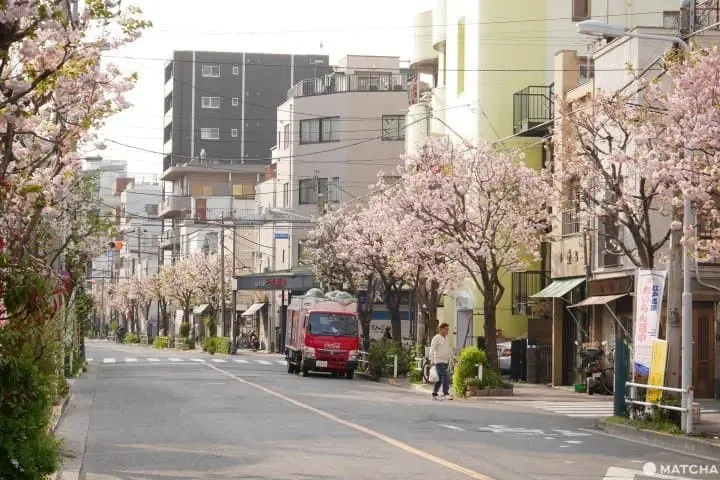
Picture from Deep Asakusa - Exploring Behind Sensoji Temple
The story is set in Minowa, a part of Tokyo's old town, located very close to Ueno and Asakusa. Tokyo is seen here through the eyes of women coming from Osaka, which means that the story brims with delightful irony directed at the living conditions in the capital. (There is plenty of detail about Osaka, as well, by the way.)
Moreover, you get glimpses of a side of Tokyo that is lesser-known: Minowa, a neighborhood where sento public baths are very loved and indispensable to the locals just like they were in the old days.
↑ Return to the top of article.
6. Kyoto: 'The Old Capital' by Yasunari Kawabata
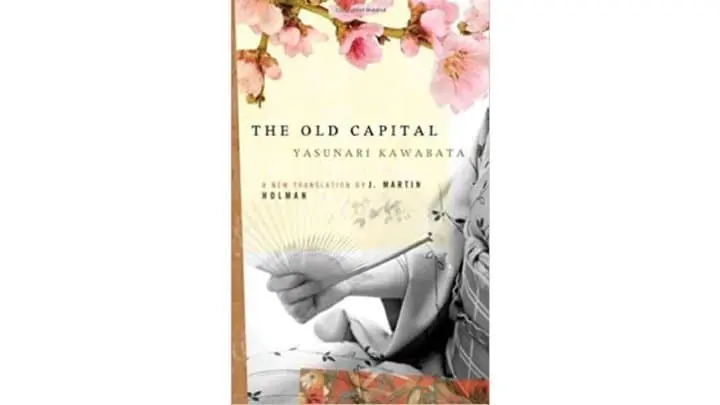
'The Old Capital' by Yasunari Kawabata, transl. by J. Martin Holman.
One of the most beautiful literary depictions of Kyoto and of the sophisticated Japanese culture that this city stands for can be found in 'The Old Capital' by Yasunari Kawabata. The novel first appeared in 1962, a time when Japan was gradually recovering after World War II.
The story focuses on Chieko, the twenty-year-old adoptive daughter of a prosperous kimono wholesaler, who meets her twin sister, Naeko, by chance while visiting Yasaka Shrine. Naeko lives in a mountain village north of Kyoto, working in the woods. Because of their identical looks, even Hideo, a kimono weaver and Chieko's suitor, is confused.
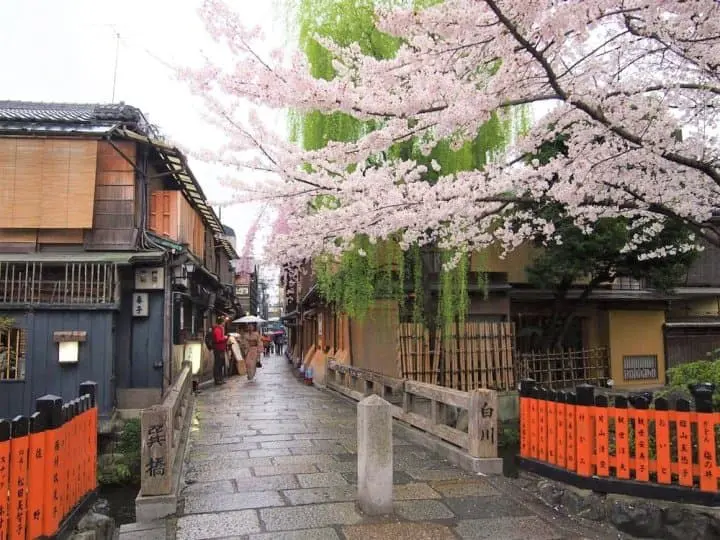
Picture from Gion's Best Sakura Spots
'The Old Capital' is an ode to the art of the kimono, full of scenes that show how deeply is this art ingrained in the lives of Kyoto citizens. The novel subtly captures the seasons in Kyoto throughout one year, emphasizing the changes that both the city and the characters are going through. Some of Kyoto's vibrant festivals such as the Gion Festival, Aoi Matsuri, and the Festival of the Ages, are also featured as being reference points in the lives of the citizens, a role that they play to this day.
You might also sense the author's nostalgia toward a sophisticated traditional culture that was in danger of disappearing. The good news is that the art of the kimono still lives in Kyoto, albeit at a smaller scale than half a century ago.
The greatest quality of this story might be that it captures the essence of Kyoto as an entity that evades the understanding of someone who looks at it with an outsider's eyes. This doesn't mean that the Japanese culture that this city represents cannot be grasped. It just means that the onlooker should be willing to change, to learn, and to grow in order to grasp the depths of Kyoto culture.
7. Kyoto: 'The Temple of the Golden Pavilion' by Yukio Mishima
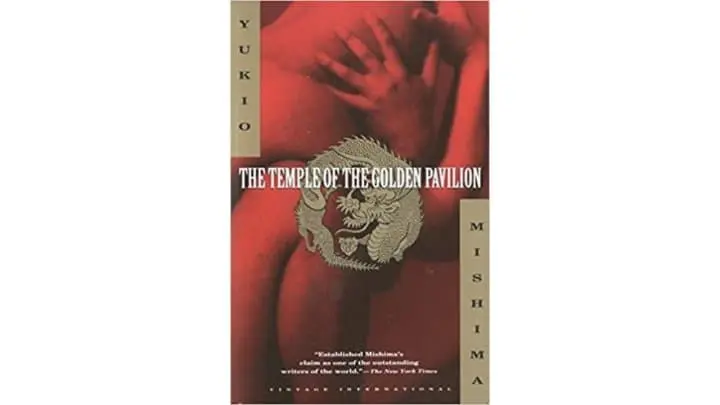
'The Temple of the Golden Pavilion' by Yukio Mishima, transl. by Ivan Morris.
One of the first places that anyone going to Kyoto might feel compelled to visit right away is Kinkakuji, the temple of the Golden Pavilion. A symbol of Kitayama culture, which coincides with the early Muromachi Period (1336-1573) when the arts flourished under the shogun's patronage, Kinkakuji is lavishly covered with gold leaf, in a show of power and sophistication.
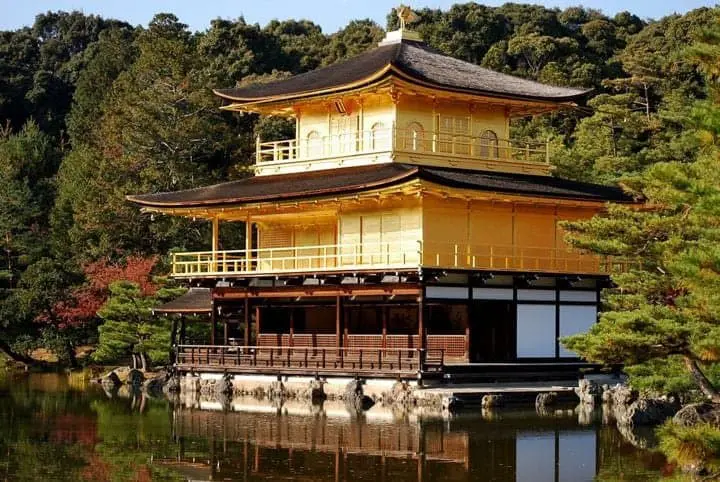
Picture from The 12 Best Sightseeing Destinations In Kyoto
Yukio Mishima's novel 'The Temple of the Golden Pavilion' was inspired by the arson incident in 1950 when a monk set fire to the Golden Pavilion. The main character of the story, a disfigured monk, ends up setting fire to the temple because its beauty gradually becomes unbearable to him.
The destructive power of a beauty that is so unworldly, fascinating, and powerful that it 'burns' the onlooker's eyes, driving them to madness--this is a theme that is recurrent in Mishima's works.
The Golden Pavilion has been rebuilt and is now a World Heritage site. The powerful story about the fascination that it inspires will definitely make you want to see it with your eyes when visiting Kyoto.
↑ Return to the top of article.
8. Wakayama: 'The River Ki' by Sawako Ariyoshi
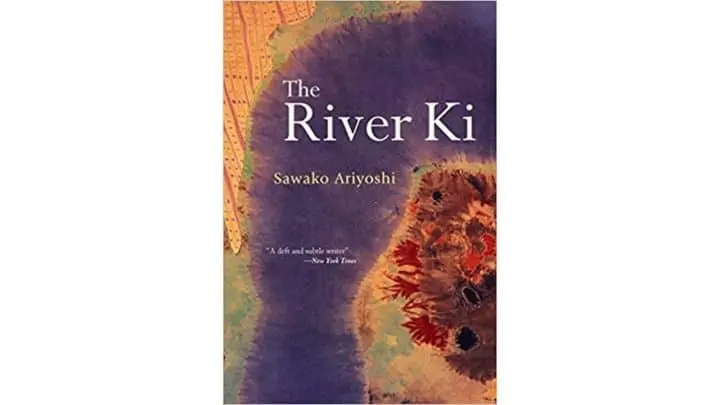
'The River Ki' by Sawako Ariyoshi, transl. by Mildred Tahara.
'The River Ki' tells the story of three generations of women who lived through the great changes brought in by the modernization of Japan - from the late Meiji period (1868-1912) and Taisho period (1912-1926) up until the years after the end of World War II in the mid-Showa period (1926-1989).
The main setting of the novel is a village along the Ki River in Wakayama, where the main character, Hana, comes as a bride in her twenties and where she spends most of her life. As a reader, you get detailed insights into traditional betrothal rituals and the lifestyle in a Japanese home at the turn of the twentieth century.
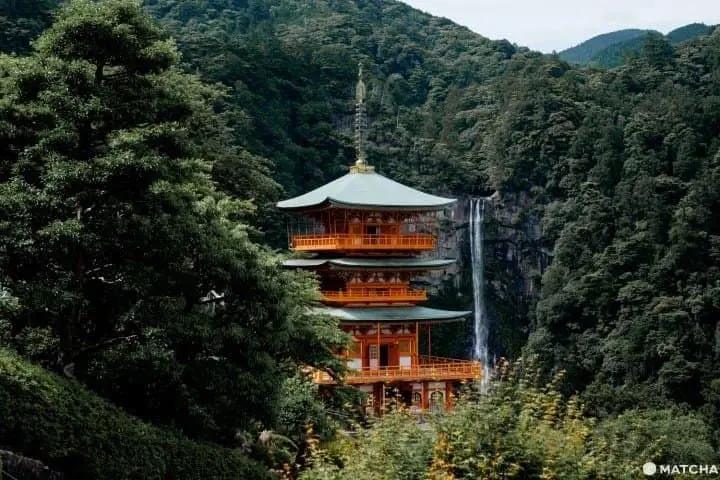
Picture from Visit Wakayama - Shrines And Nature-Filled Spots, Things To Do, And Food
Hana's daughter, Fumio, embraces feminism and chooses her own marriage partner, rebelling against her mother. After the start of World War II, fearing the bombardments in Tokyo, Fumio's teenage daughter, Hanako, comes to live with Hana in Wakayama. Hana notices her grandaughter's interest in traditional cultures such as tea ceremony and kimonos.
The Ki River, to which the locals' livelihood is deeply connected, stands witness to their lives and to the great historical changes that affected the country. The novel offers precious insights into how Japanese families lived in the twentieth century, as well as to the powerful bond between nature and the people's livelihoods. After reading this novel, you'll want to see the Ki River with your own eyes as it silently flows through the land toward the sea with the all-embracing power of life.
9. Ehime: 'The Silent Cry' by Oe Kenzaburo

'The Silent Cry' by Kenzaburo Oe, transl. by John Bester.
The main character of 'The Silent Cry' is a man who is prompted to start a new life after his child was born with a grave illness and his closest friend, a fellow translator, committed suicide in a horrible way. Together with his wife and his younger brother, Takashi, who returns after a long trip in the United States of America, Mitsusaburo returns to his home village in Ehime on Shikoku Island.
The story is set in the 1970s, but the characters have to deal with their personal histories, namely their childhood spent in this village during the days of World War II, as well as with the history of the village as it was one hundred years earlier when a series of peasant risings in the 1860s were announcing the great change that was about to happen in Japan: the end of the military government and the restoration of Imperial power at the beginning of the Meiji era (1868-1912).
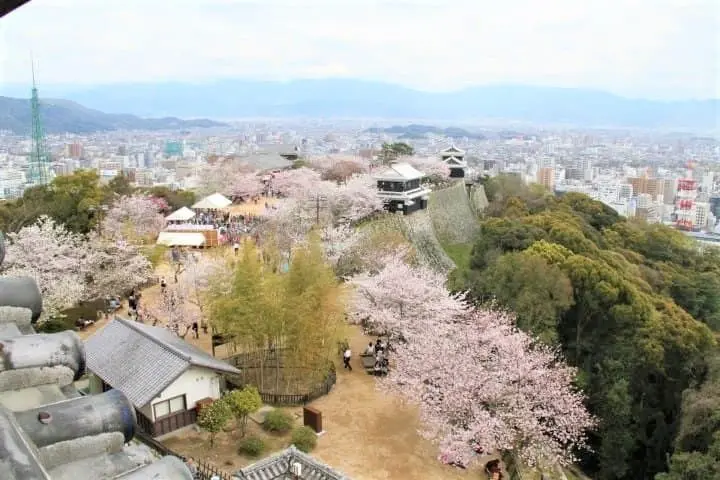
Picture from Ride The Ropeway Up The Mountain To Matsuyama Castle, Ehime
The most powerful depictions of nature on Shikoku Island are related to the forest surrounding the village. Although the country has continued to modernize and supermarket chains brought commodity and convenience to the village, the power of the forest is depicted as being stronger than ever. Something more powerful than reason moves the characters to act. While Mitsusaburo refuses to participate in the events in the village, he is nonetheless caught in the swirl of events and is prompted to make some decisions of his own in order to be able to start his life anew.
The story of an individual overlapping with history––one of the strongest features of Oe's books––might just be what we need right now, in the year 2020, when our livelihoods are changing.
10. Ehime: 'Botchan' by Soseki Natsume
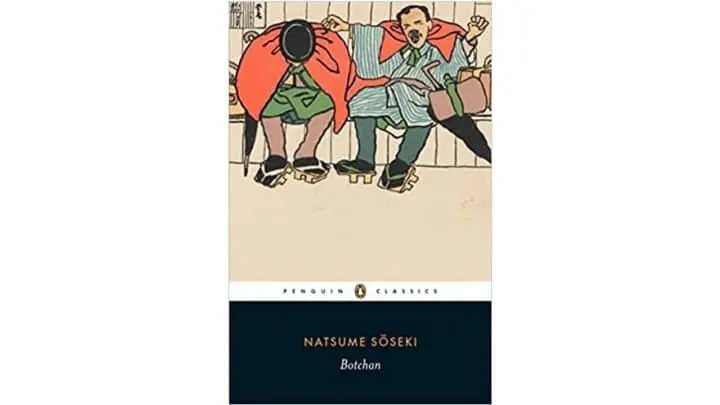
'Botchan' by Soseki Natsume, transl. by J. Cohn.
If you read 'The Silent Cry' first, you might think that the island of Shikoku is a dark place covered in a wild forest inhabited by supernatural creatures... So let us balance out this image with another story: 'Botchan' by Soseki Natsume. First published in 1906, 'Botchan' is one of the representative works of modern Japanese literature, known, and loved most often than not, by every Japanese person.
The largest part of the story unfolds in Matsuyama, the capital city of Ehime Prefecture, where the main character nicknamed Botchan, works for a while as a middle-school teacher of mathematics. Botchan is arrogant and short-tempered but has a deep respect for honesty and integrity. Because of these qualities, as you might expect, he ends up in all kinds of trouble, but somehow manages to grow up into a responsible adult capable of gratitude.
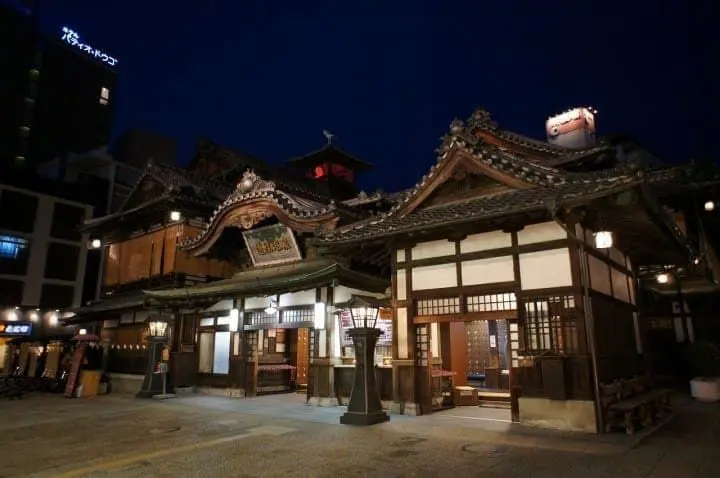
Picture from Dogo Onsen, The Famous Ancient Hot Springs Of Ehime
The story confers a bright, lively image of Meiji-period Matsuyama, seen through the eyes of a young man that's very proud of his Tokyo origins. Dogo Onsen, mentioned as Botchan's favorite hot springs, is now a famous hot spring town bustling with visitors at any time of the year partly thanks to this novel.
As to why are Meiji-period depictions of Shikoku brighter than late-twentieth-century ones, we'll leave you to reach your own conclusions. Traveling to Ehime will surely help as you will able to find traces of history breathing through the present at every corner.
Read also
↑ Return to the top of article.
11. Nagasaki: 'Silence' by Endo Shusaku

'Silence' by Shusaku Endo, transl. by William Johnston.
Read 'Silence' by Shusaku Endo and you'll feel compelled to visit Nagasaki to discover traces of the lives of the hidden Christians of the Edo period (1603-1868).
'Silence' tells the story of a young Portuguese Jesuit priest named Sebastiao Rodrigues who came to Nagasaki in 1639 to investigate the circumstances of the apostasy of his mentor, Ferreira. Since Christianity was banned by the government, those suspected of being Christians were tortured and constrained to give up their faith by stepping on a carved image of Jesus.

Picture from Nagasaki - 22 Must-Visit Destinations
Rodrigues eventually finds himself in a situation where the lives of a group of hidden Christians depend on his trampling of the holy image. Remembering the love that underlies the teachings he had dedicated his life to, he steps on the icon thus saving everyone's lives.
Nagasaki is a place where you can find out just how complex Japanese history and culture actually is. The many churches and monuments that still stand hint to a part of history that was hidden and deliberately erased. Knowledge of this history will add a missing piece in the image you may have of Japan, enriching it and bringing it closer to the true depth of this culture.
12. Okinawa: 'In The Woods of Memory' by Shun Medoruma

'In the Woods of Memory' by Shun Medoruma, transl. by Takuma Sminkey.
Okinawa has the image of being an 'exotic' place due to its beautiful islands, sandy beaches shaded by palm trees, and clear sea waters. It has a strong, original local culture that is unlike anything you'll find in the rest of Japan.
'In the Woods of Memory,' just as any other novel by Shun Medoruma, hints at a history of trauma that nowadays' Okinawans are still not completely free of. The novel centers on a gang rape incident that happened in the early aftermath of World War II, in which 17-year old Sayoko was abused by four occupation soldiers.
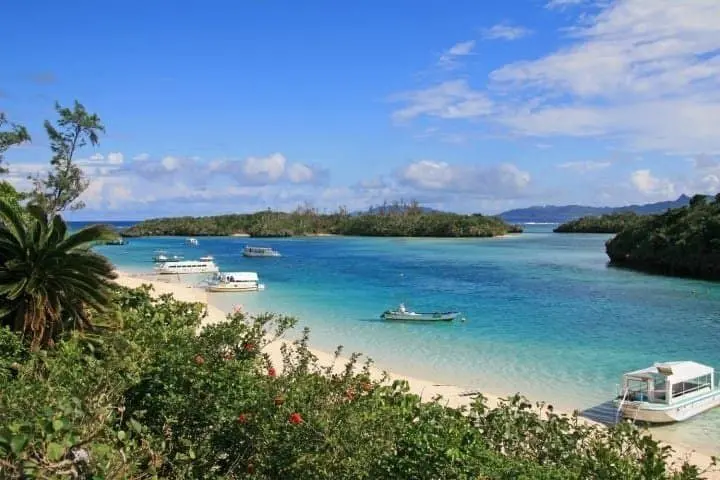
Picture from: Okinawa Travel Guide: Access, Weather, And Beaches
The feeling of powerlessness against violence pervades through the novel as the story unfolds into the 21st century. More than a story about Okinawa, the novel is a powerful message about the wounds caused by war, which affect communities in the long term.
While a relaxing trip to the beaches of Okinawa may be enticing, try to keep in mind the history of this region that spans over centuries. The rich local culture, with beautiful artisan crafts and traditional performing arts, offers glimpses of the strength of a people that has kept overcoming adversity through resilience.
↑ Return to the top of article.
Discover Japan through its Amazing Literature
We hope you'll enjoy reading these stories as preparation for your trip to Japan. If you agree that fiction is a way of communicating subjective truths that cannot be told in simple everyday words, your travel experience will be deeply enriched by these stories.
Read also
Ramona, English content editor at MATCHA since 2016, has been practicing ikebana flower arrangement (Ikenobo School) and tea ceremony (Omote Senke) since 2012. She arrived in Japan in 2012 as a graduate student with a focus on Japanese literature and performing arts. As a travel editor and writer, Ramona has visited and documented 40 of Japan's prefectures with a focus on art, history, traditional Japanese crafts, and performing arts.




















































![[2026] Family Winter Trip to Suzuka Circuit! – For Both Day trips and Overnight Stays!](https://resources.matcha-jp.com/resize/720x2000/2025/12/26-254097.webp)
![[Northern Okinawa] 4 Recommended Cosmos Fields in Okinawa | Sunflowers and Cherry Blossoms in the Same Season!](https://resources.matcha-jp.com/resize/720x2000/2024/08/12-192028.webp)


